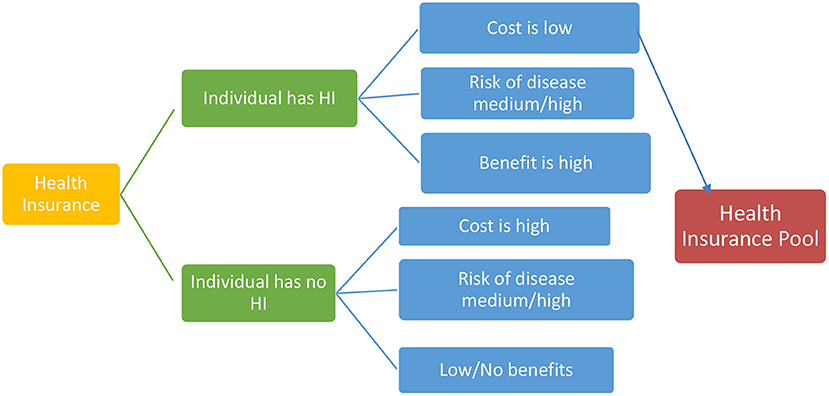The 7-Minute Rule for Medicare Advantage Agent
The 7-Minute Rule for Medicare Advantage Agent
Blog Article
Medicare Advantage Agent for Beginners
Table of Contents10 Simple Techniques For Medicare Advantage AgentWhat Does Medicare Advantage Agent Do?4 Easy Facts About Medicare Advantage Agent Described

adheres to from puzzling the relatively young age account of the uninsured with the far better health and wellness, typically, of more youthful persons. This covers the link in between health standing and medical insurance. For those without access to workplace medical insurance, poor health is a prospective barrier to purchasing nongroup coverage since such coverage may be very priced, omit pre-existing problems, or be just inaccessible. The number of uninsured Americans is not specifically huge and has not transformed in recent years. 7 out of 10 respondents in an across the country representative survey believed that less Americans lacked health and wellness insurance than really do(Fronstin, 1998). Approximately fifty percent(47 percent )believed that the number of individuals without medical insurance reduced or continued to be constant over the latter half of the last decade(Blendon et al., 1999). This decrease of virtually 2 million in the number of people 'without insurance coverage (a decrease
of around 4 percent)is absolutely a positive change. With a softer economic climate in 2000 the most up to date reported gains in insurance policy protection may not proceed(Fronstin, 2001 ). The decline in the number of uninsured will not continue if the economic situation stays sluggish and healthcare expenses remain to exceed inflation. This is due to the fact that the information were collected for a duration of strong economic performance. Of the estimated 42 million individuals who were without insurance, almost about 420,000(concerning 1 percent)were under 65 years of age, the age at which most Americans become eligible for Medicare; 32 million were adults in between ages 18 and 65, about 19 percent of all adults in this age group; and 10 million were children under 18 years old, concerning 13.9 percent of all kids (Mills, 2000). These quotes of the variety of individuals uninsured are generated from the yearly March Supplement to the Present Population Survey (CPS), carried out by the Demographics Bureau. Unless otherwise noted, nationwide price quotes of individuals without health and wellness insurance coverage and proportions of the population with you could try these out various kinds of insurance coverage are based upon the CPS, one of the most extensively utilized source of price quotes of insurance policy coverage and uninsurance rates. These surveys and the quotes they yield are described briefly in Table B. 1 in Appendix B - Medicare Advantage Agent. These studies vary in dimension and sampling methods, the inquiries that are asked about insurance coverage
10 Easy Facts About Medicare Advantage Agent Explained
coverage, and the time duration over which insurance protection or uninsurance is determined(Lewis et al., 1998, Fronstin, 2000a ). Still, the CPS is specifically beneficial due to the fact that it generates annual price quotes reasonably rapidly, reporting the previous year's insurance policy coverage approximates each September, and due to the fact that it is the basis for a regular collection of price quotes for greater than 20 years, enabling analysis of patterns in insurance coverage over time.

The Best Guide To Medicare Advantage Agent
Over a three-year duration starting early in 1993, 72 million individuals, 29 percent of the U.S. populace, were without protection for a minimum of one month. Within a single year(1994), 53 million people experienced a minimum of a month without protection(Bennefield, 1998a). Six out of every 10 uninsured grownups are themselves utilized. Functioning does enhance the possibility that one and one's family participants will certainly have insurance, it is not an assurance. Even members of families with 2 full-time breadwinner have virtually a one-in-ten opportunity of being without insurance (9.1 percent uninsured rate)(Hoffman and Pohl, 2000 ). The relationship in between medical insurance and access to care is well developed, as recorded later in this phase. Although the relationship in between medical insurance and health and wellness end results is neither direct nor simple, a comprehensive scientific and health services research literature links medical insurance protection
to better accessibility to care, far better top quality, and improved individual and population health and wellness status. As an example, the second report, on personal health and wellness results for uninsured adults, is stood for by the inner circle of the figure, while the third record, on household health, encompasses the subjects of the 2nd record however stresses a various unit of analysis, particularly, the family. The sixth record in the series will provide information concerning strategies and initiatives carried out locally, statewide, or country wide to deal with the lack of insurance and its unfavorable effects. Degrees of analysis for checking out the results of uninsurance. This discussion of medical insurance protection more info here focuses mainly on the U.S. population under age 65 because essentially all Americans 65 and older have Medicare or various other public insurance coverage.
The independent and straight effect of wellness
insurance insurance policy on access accessibility health services is well establishedDeveloped directory For still others, wellness insurance alone does not make sure receipt of treatment since of other nonfinancial obstacles, such as a lack of health care carriers in their community, minimal accessibility to transport, illiteracy, or linguistic and social distinctions. A modification in insurance policy costs or terms, as well as changes in income, health and wellness, marriage condition, terms of work, or public policies, can cause a loss or gain of wellness insurance protection.
Report this page